Firefighter Joe Collins: Vehicle Extrication – Getting The Victims Out Safely
I’m a twelve-year veteran firefighter/paramedic in the busiest volunteer fire department in our county. I hold numerous fire and EMS certifications—many of the same as professional firefighters. My day job is as a Critical Care Paramedic in the highest call volume EMS service in Iowa.
Vehicle Extrication
At our department we have two sets of tools, one completely portable and the other built into the Rescue Squad.
This is the portable set of tools. To get it running, you need to take the generator from a compartment, hook up the hoses and tools and then power up the generator. This tool is handy when you have a car wreck a long ways away from the street, road or highway. Below are the tools in the engine as they are stowed.
power unit
You can see that the power unit is accessible, but sort of crammed into the engine along with a number of other things including wooden cribbing, ventilation fans, and hotel packs of hose.
The tools built into the squad are powered by a generator in the vehicle which is handy–pull up close to the car wreck, hit a switch, grab the tools and go to work. They can also have more hose added to them for car wrecks that are further away than can normally reached with the fifty-foot reel of hose hooked into the tools.
tools
Before a vehicle is worked on, it must be properly secured as the tools are so powerful that they can lift a vehicle from the ground. Most departments use various forms of cribbing. Ours are made of constructed of a high strength polymer. We still have wooden cribbing on some of our apparatus. At a complex car wreck, you sometimes can’t have enough cribbing.
cribbing storage
Above, you can see our cribbing storage in our Rescue Squad.
cribbing
rollover
You can see cribbing being used on the right-hand side of the vehicle.
jacks
We also use rescue jacks to stabilize vehicles. Above you can see where they are stowed and below you can see them employed.
struts
We also use a wide variety of hand tools to extricate victims from vehicles.
hand tools
The most important tool used for extrication is a long-blade saw. While one part of the crew is using a cutter to pull a roof, another can be sawing on the other side.
Air powered lift bags are also an important tool. The smallest one in the picture below can lift a fully loaded fire engine. This is another tool that needs to be used with cribbing.
liftbags
With the amount of force that these tools can generate, they are often quite dangerous for the operator and require constant training to use safely.
Many of the action pictures you see above are from training and we try to cut apart a number of cars during training exercises throughout the year. The firefighters wearing yellow helmets are probationary members so everyone will learn to properly use them in controlled circumstances. There are also experts in the field who travel throughout the country teaching classes and always new information in the trade journals about extrication from newer vehicles.
Extrication tools and the techniques to use them have changed a great deal throughout the years. The first set of tools that I learned to use were Hurst tools and it took two strong men to properly operate safely as they were so heavy.
Patient safety is also a consideration due to the number of air-bags and explosive seat belt tensioners now in vehicles—it’s never a good idea to cut through one of these as they can deploy, injuring responders inside the vehicle doing patient care and furthering injuring patients.
Hybrid cars are also another very dangerous vehicle to cut apart. You aren’t supposed to cut certain colored wires, but in the dark, at 2 a.m., under the lights we use to illuminate a scene it’s sometimes makes it difficult to find them. The batteries, conventional and the ones in hybrid vehicles are all dangerous to responders.
What you have seen above isn’t necessarily all the tools used by all departments, but should give you an idea of what the tools and accessories are and how they are used.
If you want to see some very interesting techniques behind vehicle extrication, I encourage you to to to <http://www.fireengineering.com/index/extrication_zone.html> The videos and photos are what we use to train our members in the increasingly complex skills required to safely do vehicle extrication.


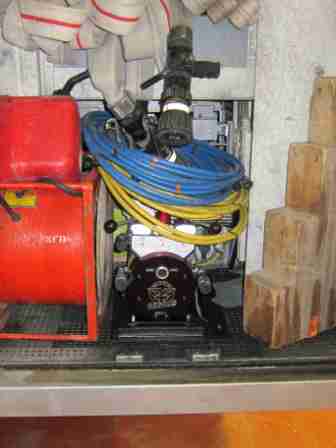
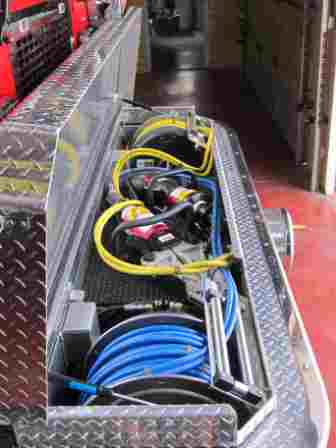
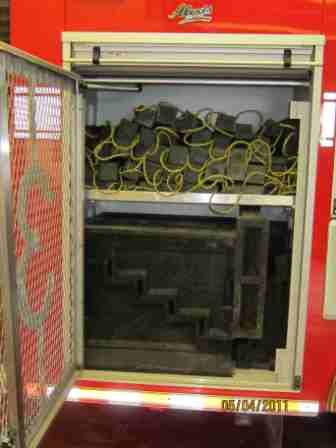



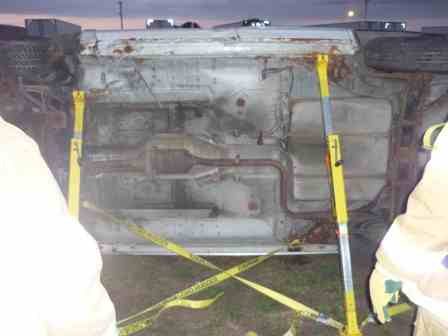

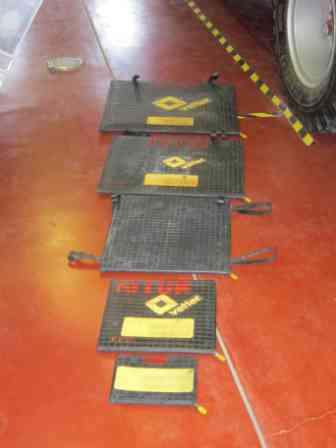



My favorite part of EMT training was extrication day, though that was twenty-some years ago, back before you’d get your head taken off with a delayed airbag deployment and cars were still (mostly) made of metal.
Wow. I saw a tractor trailer on its side the other day–now I have some idea what the rescue workers were going to have to do. Thanks for the great info.